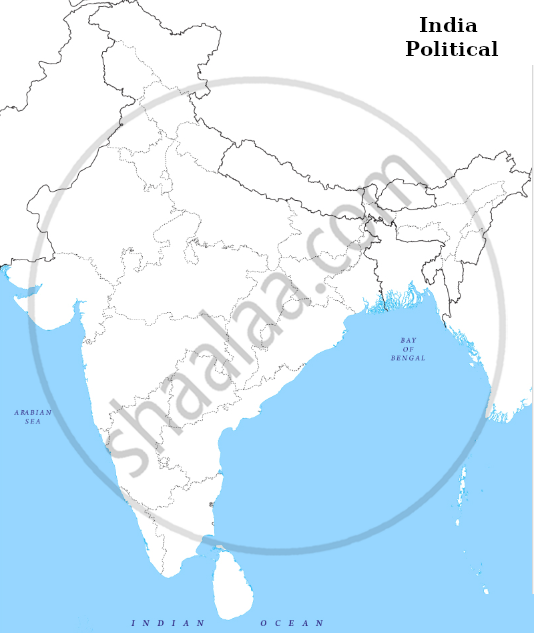Advertisements
Advertisements
प्रश्न
Explain the role Gandhiji in Indian Freedom movement from 1916 till 1922.
उत्तर
- One of the movement's most well-known leaders, Mahatma Gandhi, played a significant role in the fight to liberate India from British colonial rule. Gandhi's leadership and nonviolent resistance philosophy, Satyagraha, paved the way for India's eventual independence and inspired millions of Indians to join the independence movement.
- Shortly after arriving in India in 1915 from South Africa, Gandhi joined the fight for Indian independence. From 1916 to 1922, Gandhi was the driving force behind several initiatives and movements that challenged British colonial rule in India.
- One of Gandhi's earliest significant endeavours was the Champaran Satyagraha, which he began in 1917 to protest the unfair treatment of indigo planters in the Champaran area of Bihar.
- Gandhi's support for this cause, particularly his use of nonviolent resistance, boosted his status as a key player in the Indian independence movement and helped bring attention to the plight of Indian farmers.
- The 1919 Khilafat Movement, which supported Muslim rights in Turkey and India, was spearheaded by Gandhi. This movement, based on nonviolence and civil disobedience, helped unite India's Hindu and Muslim communities. It also demonstrated Gandhi's ability to connect people to a common cause.
- Gandhi spearheaded the Non-Cooperation Movement in 1920, which urged Indians to boycott British goods and services, including those offered by governmental organisations and academic institutions. In India, there was strong support for this movement, which was a turning point in the nation's struggle for independence. The bloody incident at Chauri Chaura in Uttar Pradesh's Gorakhpur district, where a crowd of rioters killed several police officers.
- Gandhi was deeply affected by the bloodshed at Chauri Chaura and swiftly ended the Non-Cooperation Movement. He was arrested and given a two-year prison term for joining the movement. Gandhi's leadership and nonviolent resistance persisted despite the defeat, inspiring the Indian independence movement, which eventually achieved independence in 1947.
- Gandhi's involvement in the Indian independence movement from 1916 to 1922 was notable for his use of nonviolent resistance, civil disobedience, and ability to unite and galvanise people around a common cause. His leadership during this period helped pave the way for a more significant Indian independence movement, ultimately leading to India's freedom from British colonial rule.
APPEARS IN
संबंधित प्रश्न
Answer in 100-150 Words
How Did Mahatma Gandhi Seek to Identify with the Common People?
Answer in 100-150 Words
How Was Mahatma Gandhi Perceived by the Peasants?
Write a Short Essay (250-300 Words) on the Following:
How Was Non-cooperation a Form of Protest?
Write a short essay (250-300 words) on the following:
In what way did Mahatma Gandhi transform the
nature of the national movement?
A series of ‘Praja Mandals’ was established to promote nationalist creed in ______.
Who led the Khilafat Movement in India?
On the given political outline map of India, locate and label the following with the appropriate symbol:
The place where Gandhiji withdrew Non-Cooperation Movement.

On the given political outline map of India, locate and label the following with the appropriate symbol:
The place where Gandhiji started satyagraha for the indigo planters.

Consider the following events:
- Jallianwala Bagh Massacre
- Khilaf at Movement
- Formation of Swaraj Party
- Arrival of Simon Commission
The correct chronological order of these events is:
Who drafted the resolution on fundamental rights for the Karachi Session of Congress in 1931?
Who of the following organized a march on the Tanjore coast to break the Salt Law in April 1930?
In which year, Jallianwala Bagh Massacre took place?
What was the main demand of khilafat movement?
Match the following.
| List I | List II |
| A. Parallel government | 1. Dandi |
| B. Assassination of Mahatma Gandhi | 2. Amritsar |
| C. Salt Satyagraha | 3. Delhi |
| D. Jallianwala Bagh Massacre | 4. Satara |
Explain the importance of the Non-Cooperation Movement.
On the given political outline map of India mark and label of the follow with appropriate symbol:
The place where Jallianwala Bagh Massacre happened.

"As a consequence of the Non-cooperation Movement the British Raj was shaken to its foundation for the first time since the Revolt of 1857." Explain the statement with examples.
"Mahatma Gandhi's own role was vital in the growth of 'Gandhian Nationalism' but it also depended on his followers". Explain the statement with examples.
Assertion (A): Gandhiji called for a countrywide agitation against the Rowlatt Act.
Reason (R): British authorized the government to imprison people without trial.
Describe the role of Gandhiji in the Indian freedom struggle from 1922 till 1931.
Describe the causes and events of the 'Non Co-operation Movement'.
